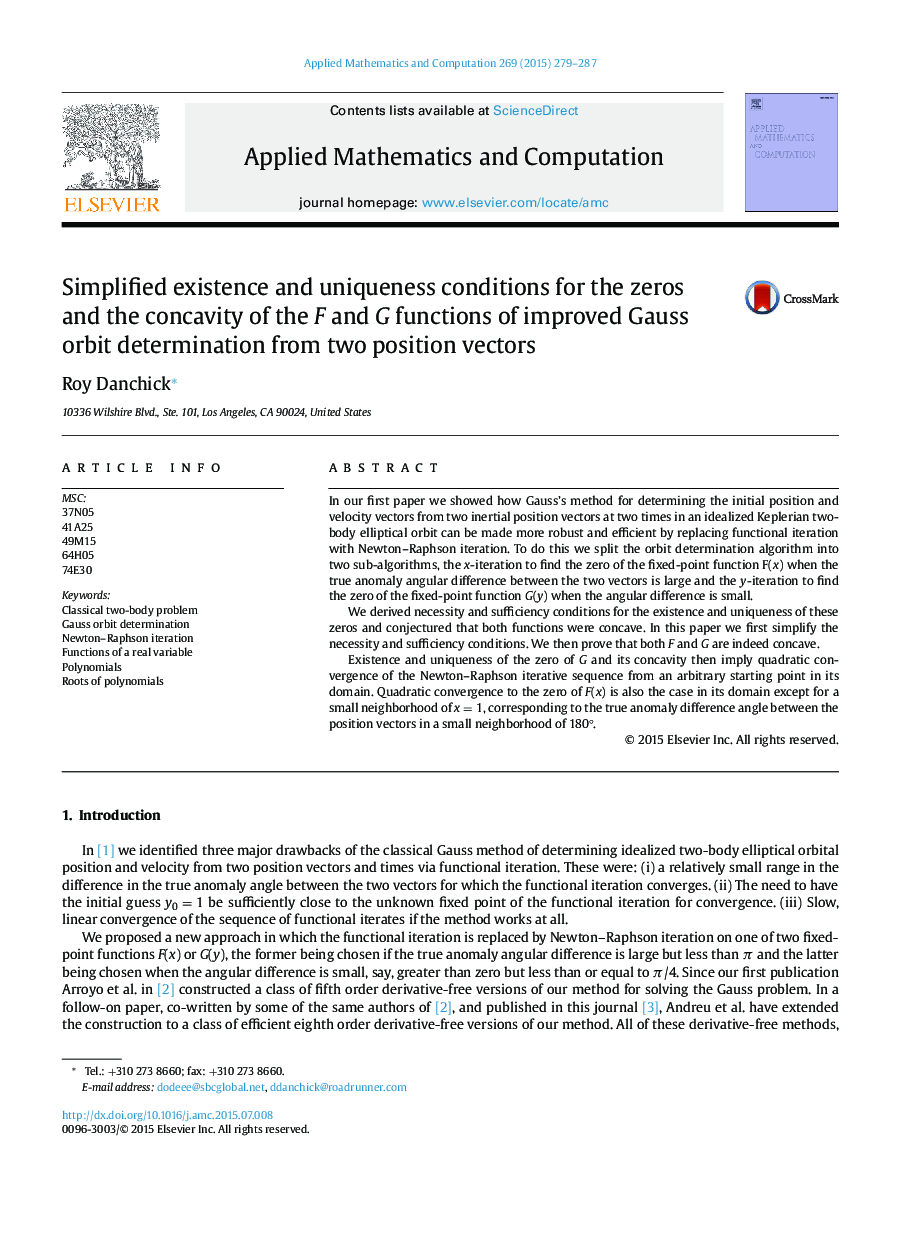| Article ID | Journal | Published Year | Pages | File Type |
|---|---|---|---|---|
| 6420098 | Applied Mathematics and Computation | 2015 | 9 Pages |
In our first paper we showed how Gauss's method for determining the initial position and velocity vectors from two inertial position vectors at two times in an idealized Keplerian two-body elliptical orbit can be made more robust and efficient by replacing functional iteration with Newton-Raphson iteration. To do this we split the orbit determination algorithm into two sub-algorithms, the x-iteration to find the zero of the fixed-point function F(x) when the true anomaly angular difference between the two vectors is large and the y-iteration to find the zero of the fixed-point function G(y) when the angular difference is small.We derived necessity and sufficiency conditions for the existence and uniqueness of these zeros and conjectured that both functions were concave. In this paper we first simplify the necessity and sufficiency conditions. We then prove that both F and G are indeed concave.Existence and uniqueness of the zero of G and its concavity then imply quadratic convergence of the Newton-Raphson iterative sequence from an arbitrary starting point in its domain. Quadratic convergence to the zero of F(x) is also the case in its domain except for a small neighborhood of x=1, corresponding to the true anomaly difference angle between the position vectors in a small neighborhood of 180°.
